Published Feb 5, 2020
In Massachusetts, a Scientist Is Preparing to Take Tricorders to Mars
They’re also key to the Mars 2020 expedition
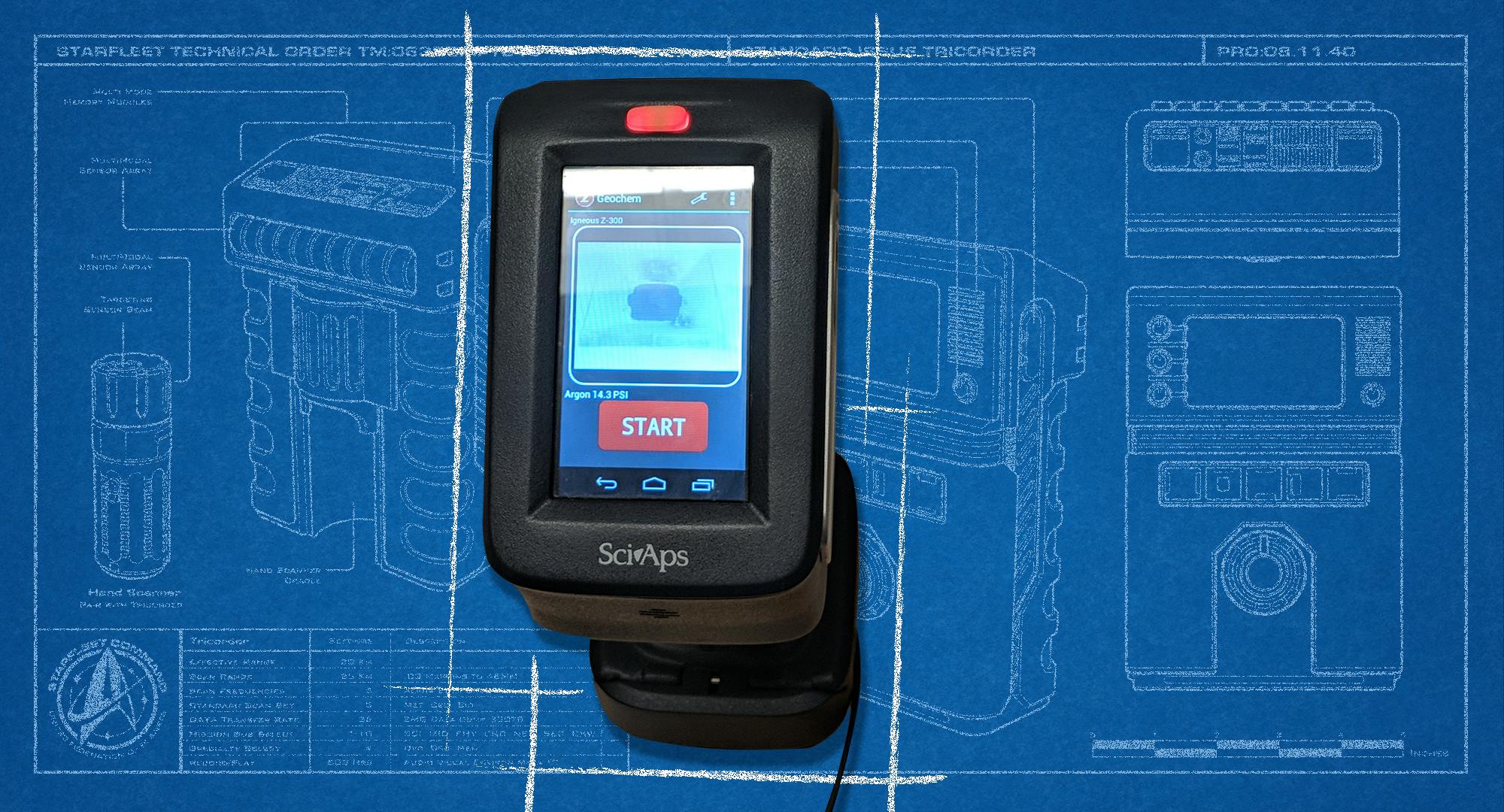
StarTrek.com
With a click and zap, Captain James T. Kirk’s tricorder could identify any space rock within milliseconds. The handheld multi-sensory device originally issued by Starfleet has been a consistent prop since The Original Series. They have also taken on different sizes and shapes, and have been used for different purposes. Dr. ‘Bones’ McCoy could wave it above an injured or sick crew member, identify and cure them in a second. Uhura logged notes and maintained ship files on hers.
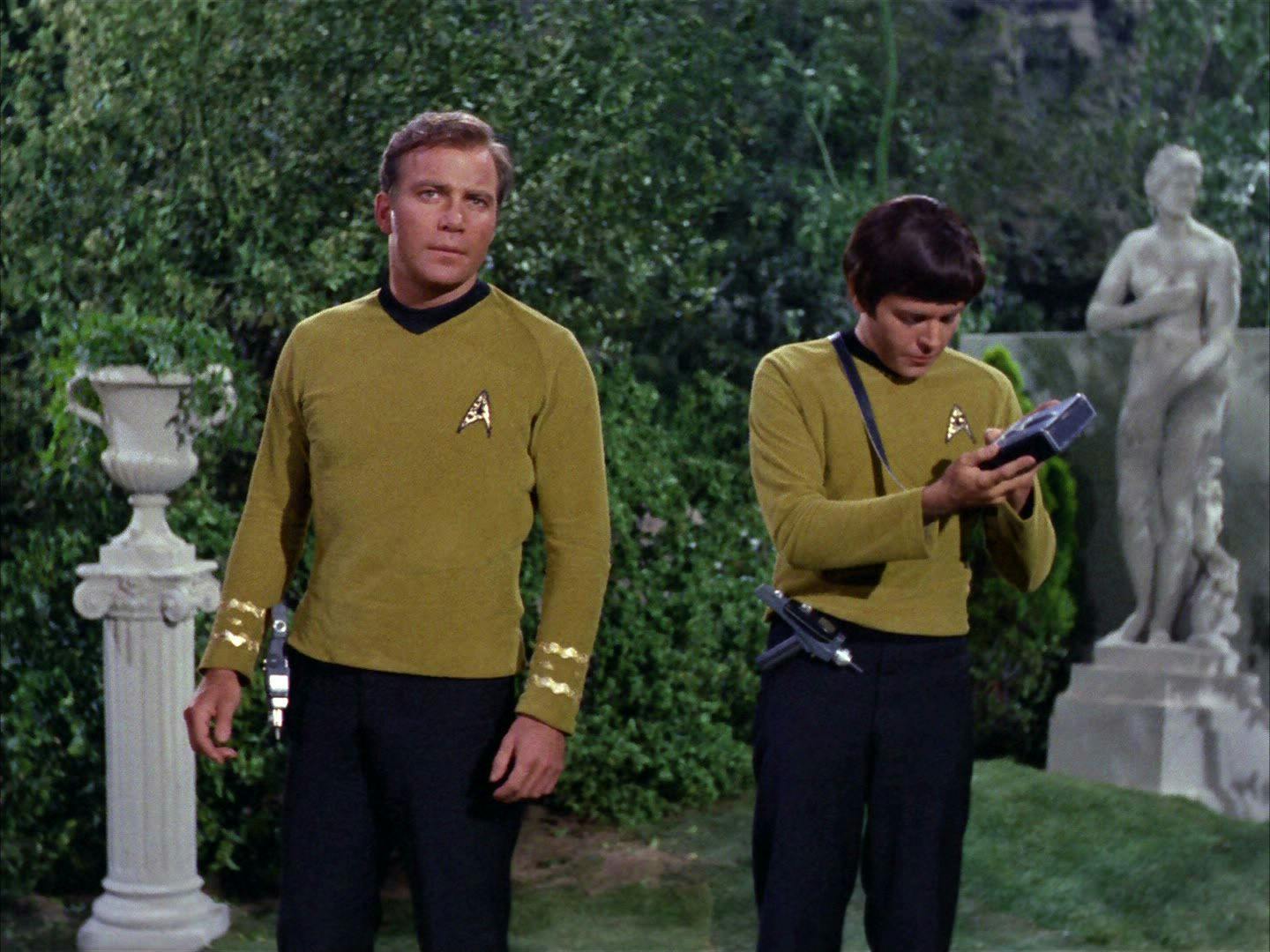
StarTrek.com
Tricorder technology may have been a fantasy in the 1960s, but the instruments used to analyze, identify. and record data have been manufactured for commercial use since the 1980s. Just like Dr. McCoy, doctors use the technology today to examine a patient’s symptoms. The Palm Pilot –– the early smart mobile device –– collected and stored material just like Uhura’s device. But the tricorder plays a major role in space exploration too.
Mount Holyoke College Kennedy-Schelkunoff Professor of Astronomy Darby Dyar wants to perfect how those instruments identify materials in outer space. Her lab is developing a database of geological samples that helps future space travelers to identify rocks and minerals in an instant. The Dyar lab is one of nine Solar System Exploration Research Virtual Institute teams helping NASA study planetary science and space exploration for the next five years.
“Since the Apollo missions, NASA has been interested in how astronauts do what and how they do. How do they make better decisions?” Dr. Dyar said of the virtual collaboration. “We work with NASA to see how astronauts unpack the information they receive.”
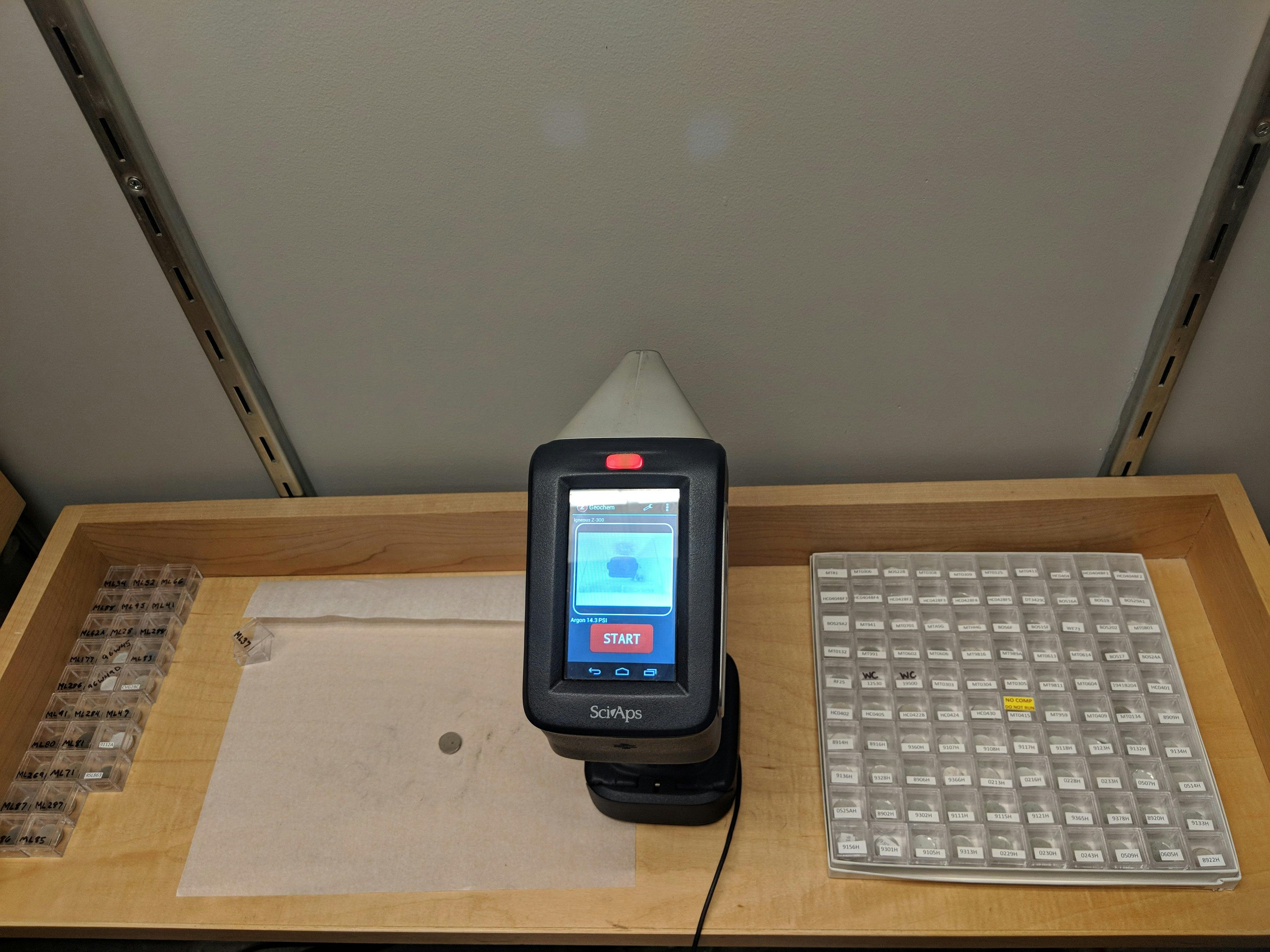
Mount Holyoke College
That requires developing a database of spectrographic information for use with handheld spectrometers. Astronauts are limited in their ability to quickly identify an unknown rock. The lab’s work will make the instruments’ knowledge even more expansive, and more accurately allow astronauts to identify them accurately in real time.
The instruments are already used during sample collection. “They work pretty darn good, too,” Dyar said. But, the lab’s database of 3,000 rocks –– one of the largest collections of space rocks in the world –– will make the technology work even better.
“We want to make it possible for an astronaut to just point and shoot this x-ray beam and get an immediate read-out on the screen that says, ‘based on the light we got back, it’s probably X,” said Caroline Ytsma Smith, a former technician in the lab.
To gather the material, scientists collect elemental and mineral “signatures” that can be used as a basis for comparison and to determine the composition of unknown samples. Before the user can zap at a rock, a team like Dyar’s must create the database. The lab uses multivariate analysis to make predictions about what elements are present then feeds the data through a machine-learning method that can “take advantage of more than just one piece of information.” The machine can weigh what’s important and what’s not.
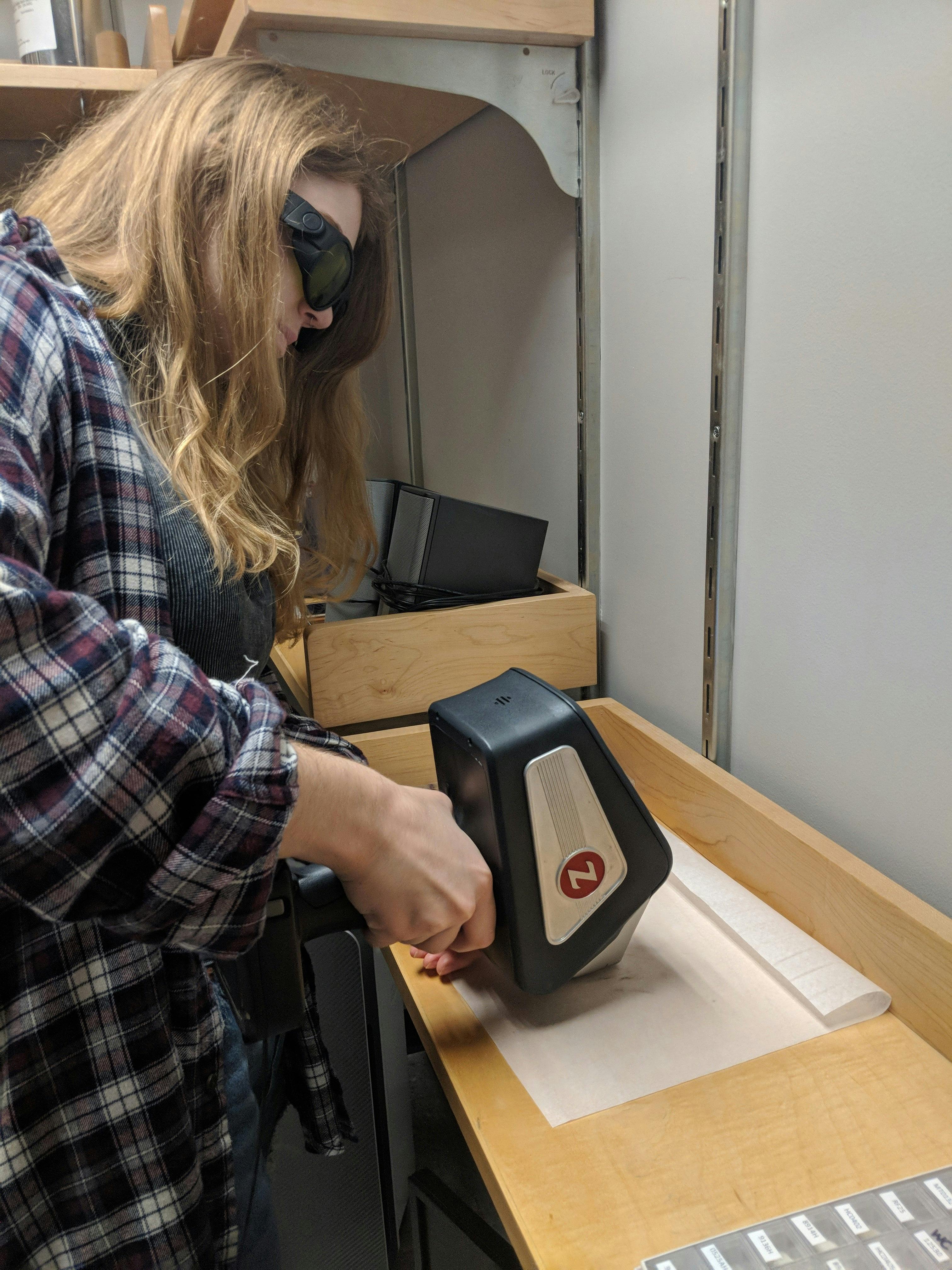
Mount Holyoke College
Astronauts and researchers use three kinds of spectral instruments: LIBS (Laser-induced Breakdown Spectroscopy), XRF (x-ray fluorescence) and Raman. LIBS shoot a laser at a the rock to create a minute amount of plasma on the surface of a sample and excite electrons into higher orbitals. When the electrons resume their usual orbitals, they emit light, allowing for identification of the signatures of the composite materials. The advantage of LIBS is that it can penetrate more deeply into a sample by melting it. These laser-based machines can “scan from as far as a football field and as close as up against the rocks,” Dr. Dyar said. LIBS are also used in the mining industry and in food science to see if there are trace metals in samples such as zinc and sulphur.
XRFs use an x-ray beam to move a sample’s electrons from of their orbits and again, when the electrons resume their usual orbit, they emit light, which is analyzed by the spectrometer to determine what elements are present in the sample. Because XRF only excites inner orbit electrons, it is best used to identify heavier elements, such as those in the first three rows of the periodic table.
The Raman spectroscopy uses a laser to excite electrons within a sample, then measures the frequency of the scattered light against the frequency of the original light input, which provides a “molecular fingerprint” of specific materials.
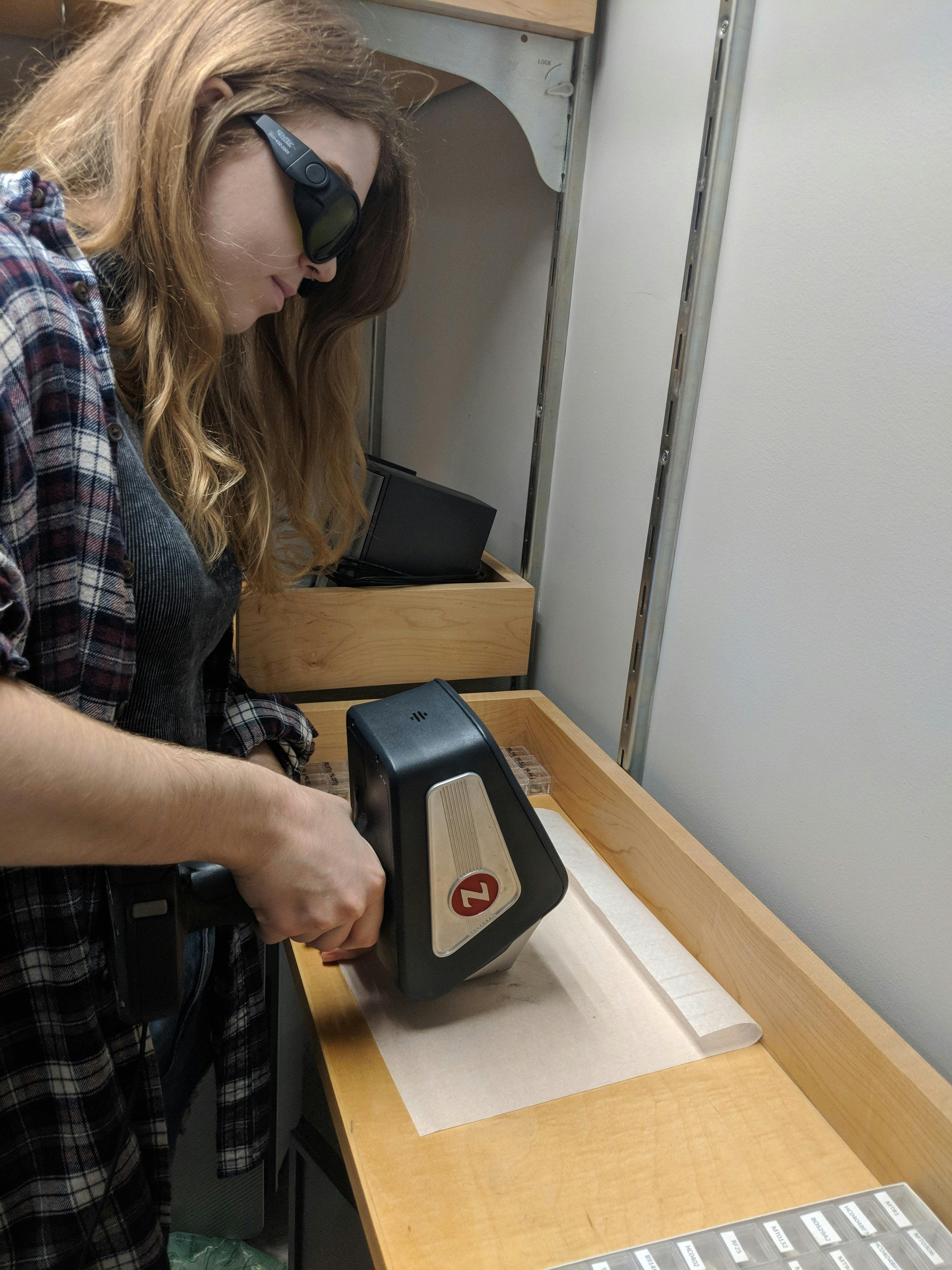
Mount Holyoke College
They work in conjunction with Raman identifying minerals, while LIBS and XRF determine the rocks’ chemistries. Dyar’s lab currently uses as handheld Raman made by Bruker BRAVO, an Olympus Innov-X Delta Premium portable XRF and a portable LIBS, also borrowed from Goddard and made by Boston-based Sci-Aps. The XRF and LIBS are on loan from the Goddard Space Center.
The lab is currently working with SciApps to optimize their predictions using an online tool called SuperMan, built by students at the University of Massachusetts at Amherst, to upload data, manipulate it and make models that can be applied to unknown rocks.
The XRF and LIBS are also crucial to the Mars 2020 mission, which launches in July. As our proto-tricorder technology is refined, perhaps it will be used later to explore other planets, and even galaxies, bringing us ever so closer to a Star Trek future.
Dr. Erin Macdonald Explains Transporters
James Russell (he/him) is a freelance writer in Texas. He currently is the web editor for the Gay and Lesbian Review and contributes regularly to D Magazine, Fort Worth Weekly, Next City and Quorum Report. You can find him on Twitter at @jamesfortexas.
